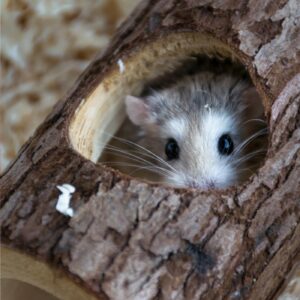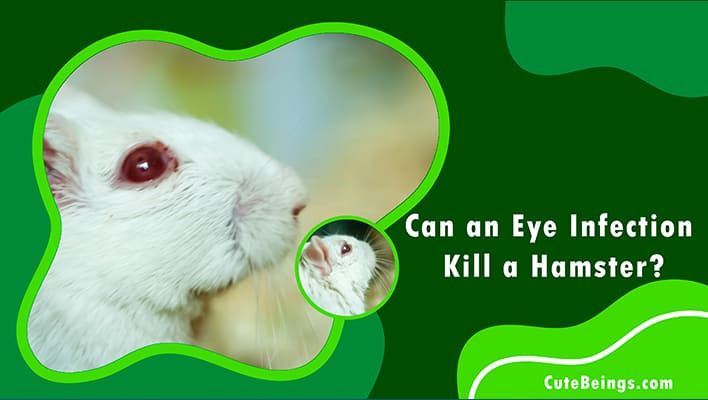The wild hamster’s hideout is a place where the hamsters go to escape from the cruel world that they live in. They are very clever and have created places where they can feel safe and secure. They can be found hiding in burrows, tree holes, and even under rocks.
The wild hamster’s hideout has several purposes. It provides safety from predators, a place to rest or sleep, and it also has food sources for the hamster.
Table of Contents
Do Hamsters Need Hideouts?
Yes. Domestic hamsters also need hideouts like their wild counterparts. Let’s find out why domestic hamsters need hideouts.
Why Do Hamsters Need Hides?
-
When they are scared or alone.
Hamsters need hiding places to have a sense of security and safety. They need a place to go when they are feeling scared and alone. A place where they can feel safe and secure.
Some people think that hamsters do not need hideouts because they are small and can easily find a place to hide. But, hamsters are prey animals and they are used to hiding from predators. They might be small but they still need a place to go when they feel threatened or scared.
We should provide them with some sort of hideout because it will give them peace of mind and make them feel safe.
When they are in the wild, they have many different places to hide. Some of these hideouts are underground burrows and nests made out of leaves and grasses. Others might be tree holes, rock crevices, or abandoned animal burrows. When they live in captivity, hamsters don’t have the same opportunities for hiding because their environment is more controlled by humans.
-
When they are bored.
A cage is not enough for it because they get bored and stressed from being in the same old environment all the time. If you provide hideouts, it can be entertaining for them.
-
Hamsters like hiding in places where they have access to food and water.
Hamsters need a place to store their food and water so they can take when they need it.
-
When they feel sleepy.
A hideout is a place where the hamster can sleep when it feels sleepy. The best types of hideouts are those that are dark and quiet, so that the hamster feels safe while sleeping.
Rodents are better suited to a dark, quiet place. To ensure they feel comfortable, place some of hiding spots/hideouts in their cage for them to enjoy.
What Does It Mean When A Hamster Hides?
This is a behavior that hamsters exhibit when they are feeling threatened or scared. Hiding is their instinct to protect themselves from predators.
Why Does My Hamster Hide When I Come?
It is natural that hamsters are afraid of humans. They have been hunted and killed by humans for centuries. The fear of humans is in their genes. In order to help them get used to the presence of humans, we should try to be as gentle as possible when we are near them. We should not make sudden movements or loud noises. We should also try to avoid picking them up from the ground very quickly. If you’re interested in learning more about how to pick your small guy, read this article “How To Pick Up A Hamster Without Scaring It“.
How Many Hides Does A Hamster Need ?
The answer to this question is dependent on a variety of factors. Following factors that determine how many hides a hamster needs:
- The size of the hamster.
- The size of its cage.
- How many other animals are in its cage.
- Whether it is male or female.
- What type of hide it is.
How Big Should A Hamster Hideout Be?
The size of a hamster’s hideout depends on the type of hamster and their natural habitat. As a recommendation, a hamster’s hideout should be at least 2 times the size of the hamster itself.
But while buying or making a Syrian Hamster hideout, don’t forget to make sure it is the appropriate size. This way you can ensure that they will have enough room and won’t get stuck.
Do Hamsters Hide A Lot?
Some hamsters may stay hidden more often, while others will explore the environment. Generally speaking most of the hamsters have a tendency of hiding when they feel threatened.
It is difficult to say if hamsters hide a lot or not. Some hamsters are more prone to hiding than others, but it is not clear if this is due to their personality, the environment they live in, or some other factor.
Hamsters are known for being shy animals who like to spend time in dark places. They may also be more likely to exhibit shy behavior if they are living in an unfamiliar environment. As well as, some hamsters may prefer dark spaces because they are used to living in the wild, but this can also be due to their eye pigmentation and coat color which allows them a better chance of not being detected by predators. .
Why Is My Hamster Hiding In The Corner?
A lot of people might not know the reasons why their hamster run to the corner of its cage and hide. There are many reasons why they might do that. It could be because,
- It might be scared or nervous about something in its environment.
- It may be trying to find food or water.
- It may be trying to dig the floor.
- It may be trying to use the corner of its cage as a bathroom.
- It may be trying to sleep.
Are Hideouts Good For Hamsters?
The question of whether or not hideouts are good for hamsters is a difficult one to answer. It all depends on the type of hideout you provide and the way in which your hamster interacts with it.
Different types of hideouts can provide different benefits. Some may be better at keeping your hamster safe while others may be better at keeping them entertained.
Are Plastic Hideouts Good For Hamsters?
Some hamsters like to chew on plastic hideouts. But is this safe for them?
Hamsters are omnivores, meaning they eat plants and animals. Plastic is a synthetic material that could cause hamster health problems. It can lead to intestinal blockages, which can be fatal for the hamster.
Large hamster hideout
What Can I Use For A Hamster Hideout?
- Lion hamster hideout
- Hamster hideout plastic
- Hamster log hideout
- Hamster coconut hideout
- Hamster hideout ceramic
- Mushroom hamster hideout
It is easy to find above best hasmter hides on Amazon. As wel as, you can purchase cute and affordable cheap hamster hideouts from pet stores in your area.
In addition to the above, you can also use following natural hamster hideout ideas to secure and entertain your little furry.
-
Natural logs.

- Card Board Boxes.

- etc.
How Do You Make A DIY Hamster Hideout?
Here is a quick DIY hideout for your hamster with detailed instructions.
You will need ,
-
A mold (Use a plastic or iron cup/container)

-
Toilet paper (Be sure that it’s unscented. If not, it might be eaten by your hamsters)

First, you will need to create a mold of your hand. Place the toilet papers on top of your mold and start wrapping it around the hand shape until you have covered every inch of the mold. Also be careful about the thickness when appling on the mold. You have to wet toilet papers while applying on the mold, otherwise toilet papers will come off from the mold as well as it will be difficult to remove the paper from the mold.
Once you are done with that, put a little bit of water on top of the toilet paper and start smoothing out any bumps in order to make sure that there is no air inside the mold.
Then, place it under a heat lamp for about 2 hours or in an oven for around 10 minutes at the appropriate temperature(If you use the oven makesure you are not using a plastic mold).
Then, carefully separate the mold from the applied toilet papers.
Finally, cut a hole somewhere near the edge of the mold, like the image below. Then place the hamster inside and let it enjoy.

Final Thoughts
Hides are one of the most important factors in hamster care. It’s important for their mental health and well-being. They provide a sense of security and warmth for your pet.
A hamster’s cage should have a variety of different hiding places to keep the hamster entertained. The more hides you provide, the more comfortable and happy the hamster will be.
Some hamster owners believe that hideouts are a must-have for their pet. They are convinced that it is necessary to provide a safe place for the hamster to sleep, explore, and hide. However, there is no evidence that proves the necessity of a hideout if you have a large enough cage with lots of space and hiding spots.

Hello, my name is James and I’ve been caring for tiny pets for over 14 years with a passion. I enjoy passing on my expertise to other individuals in order for them to have the same amount of enjoyment as I do.




